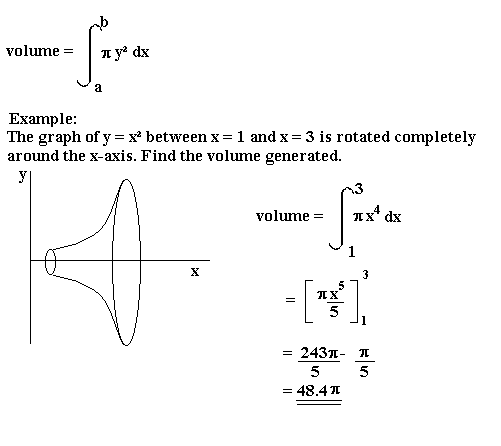 |
| Johannes Kepler, 1571-1630 |
After receiving preliminary education, Kepler went on to the University of Tübingen to become ordained. In fact, Kepler was quite notably devout, claiming that his attempts to understand the universe mathematically was part of a fulfillment of his responsibility as a Protestant Christian. According to Kepler, in fact, God had designed the universe to adhere to a special mathematical plan.
While learning at Tübingen, Kepler was a pupil under the famous astronomer Michael Mästlin, who encouraged Kepler to challenge himself in mathematics and introduced to his class the new Copernican concept of the heliocentric solar system. When Kepler expressed problems with Protestantism, the authorities at Tübingen discovered his anti-orthodoxy and Kepler was excommunicated in 1612. It was Mästlin who ultimately persuaded Kepler to forget ordination.
 Continuing in his research, Kepler eventually classified the Earth's moon as a satellite and not a seventh planet. He was the first to use this term to also describe the Galilean moons revolving around Jupiter. Kepler began to teach in Graz, and in 1596, he wrote Mysterium Cosmographicum ("Mystery of the Cosmos"), a book intended to answer some questions about the nature of the solar system. Within this book, he presented the first model of the solar system as deduced entirely by math. Mysterium Cosmographicum attempts to explain the orbits of the planets in the solar system--and does quite well, as the highest percent error was still under 10%--quite a feat, even by today's standards. Also concerned with supporting the Copernican theory of the solar system, Kepler gives evidence to prove that the planets revolve around the sun.
Continuing in his research, Kepler eventually classified the Earth's moon as a satellite and not a seventh planet. He was the first to use this term to also describe the Galilean moons revolving around Jupiter. Kepler began to teach in Graz, and in 1596, he wrote Mysterium Cosmographicum ("Mystery of the Cosmos"), a book intended to answer some questions about the nature of the solar system. Within this book, he presented the first model of the solar system as deduced entirely by math. Mysterium Cosmographicum attempts to explain the orbits of the planets in the solar system--and does quite well, as the highest percent error was still under 10%--quite a feat, even by today's standards. Also concerned with supporting the Copernican theory of the solar system, Kepler gives evidence to prove that the planets revolve around the sun.It was around this time that Kepler was searching for accord with his cosmological theories, so he published his work. Eventually, he sent it to one of the current leading astronomers of his time, Tycho Brahe, who almost immediately hired Kepler as an assistant. After Tycho died in 1601, Kepler continued as Imperial Mathematician, and now he had at his disposal all of Tycho's observations. There was so much available to Kepler that he could use it as a resource to check his mathematical findings, one of the first of which was that Mars' orbit was elliptical. This discovery eventually led to what is known today as Kepler's First Law.
Soon after, he established his second law (that the radius between a planet and the sun will cover equal areas of space anywhere in the planet's orbit, regardless of how far it is from the sun, so long as the amount of time remains constant). These findings were published in his Astronomia Nova ("New Astronomy"), along with further support for the Copernican perspective of the solar system. Following shortly after this, Kepler continued on to establish the orbits of the other known planets, stating that his laws applied to them as well.
Less-known to most people is Kepler's work in optics. At the time, a new device known as the camera obscura had recently been presented, providing the first precursor to the modern-day camera. Interested in this invention, Kepler provided the first mathematical analysis of the technology, and went on to also give the first description of the way a human eye functions. He even gave details such as how the eye first perceives everything upside-down; that is to say, the initial image on the retina is inverted. Ad Vitellionem Paralipomena..., or "Supplements to Witelo, on the optical part of astronomy" published these studies.
Soon after Galileo's use of the telescope in 1610 to discover some of Jupiter's best-known moons, in 1611, Kepler published Dioptrice, a study on the way lenses work. In this dissertation, he also designs a new kind of telescope, one with two convex lenses. The creation caught on so well that it is now known as the astronomical telescope.
 During his time in Prague, Kepler was very productive, despite the difficult times he faced. In 1611, his seven-year-old son and his wife died in short order. Afterwards, the emperor abdicated and was replaced with Emperor Matthias, a Catholic who lacked tolerance of Protestants. Therefore, he moved with the rest of his children to Linz, which is today an area in Austria.
During his time in Prague, Kepler was very productive, despite the difficult times he faced. In 1611, his seven-year-old son and his wife died in short order. Afterwards, the emperor abdicated and was replaced with Emperor Matthias, a Catholic who lacked tolerance of Protestants. Therefore, he moved with the rest of his children to Linz, which is today an area in Austria. In 1613, Kepler married his second wife, Susanna, in order to have someone help raise his children. During the wedding, he noticed that the volumes of the contents of wine barrels were measured using a rod stuck diagonally in through a hole. His curiosity led him to do research on the volumes of solids of revolution. As a result, in 1615, he published Nova Stereometria Doliorum, or "New Stereometry of Wine Barrels."

An example of a calculus problem involving solving for the volume of a solid rotated around an axis.
 As Imperial Mathematician, Kepler had a responsibility to create and update tables of astronomical data according to observations made by Tycho Brahe. While doing this work, he had been planning The Harmony of the World, a study on cosmology that included a further advancement of his past mathematical concepts. He also included proofs; asserting that of all polyhedra, only thirteen of them are convex and uniform; and describing two polyhedra which were non-convex and regular. In this book, Kepler publishes his third and final law, dealing with the direct relationship between the periods of two planets and the average radii of their orbits.
As Imperial Mathematician, Kepler had a responsibility to create and update tables of astronomical data according to observations made by Tycho Brahe. While doing this work, he had been planning The Harmony of the World, a study on cosmology that included a further advancement of his past mathematical concepts. He also included proofs; asserting that of all polyhedra, only thirteen of them are convex and uniform; and describing two polyhedra which were non-convex and regular. In this book, Kepler publishes his third and final law, dealing with the direct relationship between the periods of two planets and the average radii of their orbits. During this time, Kepler's mother was indicted for witchcraft. It was in the carriage, on the way to defend his mother in court, that he studied Vincenzo Galilei's work on music theory. In Harmony of the World, Kepler makes several references to Galilei's studies.
In 1630, at the age of 59, Kepler died in Regensburg, which is presently an area in Germany. He was buried as a local church, but his grave was demolished in the 30 Years' War.
Sources
Field, J. V. "Johannes Kepler." Kepler Biography. School of Mathematics and Statistics, University of St Andrews, Scotland, Aug. 2005. Web. 20 Apr. 2015. <http://www-history.mcs.st-and.ac.uk/Biographies/Kepler.html>.
"Johannes Kepler." Famous Scientists. famousscientists.org. 12 Mar. 2015. Web. 4/20/2015 <http://www.famousscientists.org/johannes-kepler/>.
"Johannes Kepler." Wikipedia. Wikimedia Foundation, n.d. Web. 22 Apr. 2015. <http://en.wikipedia.org/wiki/Johannes_Kepler>.
No comments:
Post a Comment